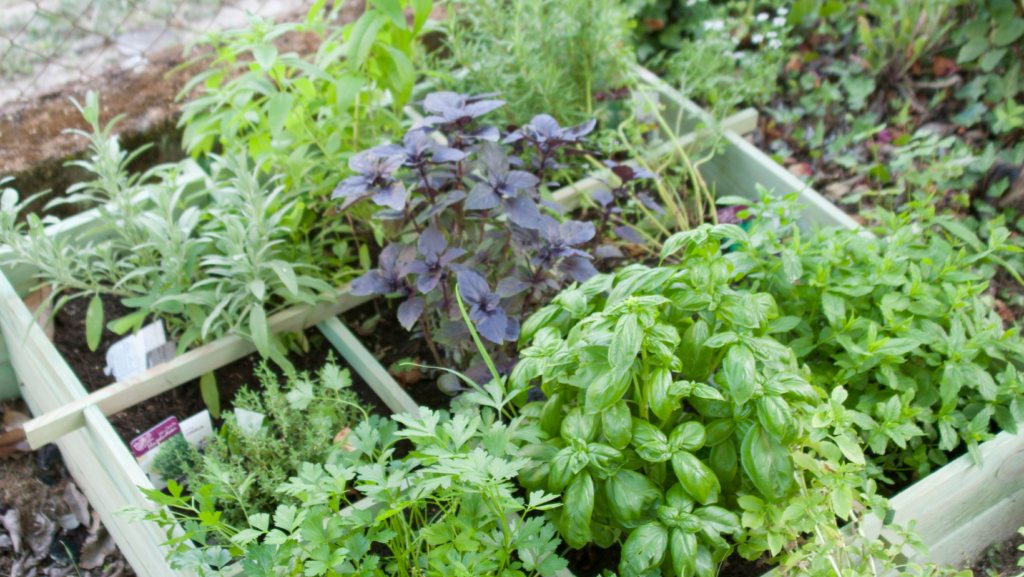There’s nothing like the flavor of fresh herbs picked right from your own garden. Healthy, delicious, and aromatic, they add so much to food, and many are super easy to grow, too. What could be better?
When we started building our house, an herb garden was one of our first outdoor projects. We love cooking with fresh herbs, and they also make great, low maintenance landscape plants. Not only are they beautiful, but many are highly disease resistant, and some even repel critters like deer and rabbits – bonus!
Deciding which herbs to plant is a personal choice based on your tastes, needs, and desires for your garden. Some things to consider when selecting garden herbs includes:
- The main purpose for your herbs – cooking or landscaping.
- The herbs you use the most in your cooking.
- The amount of space you have for your herb garden.
- If you plan to use a raised bed, garden planter, or in-ground planting method.
A Quick Intro to Herbs
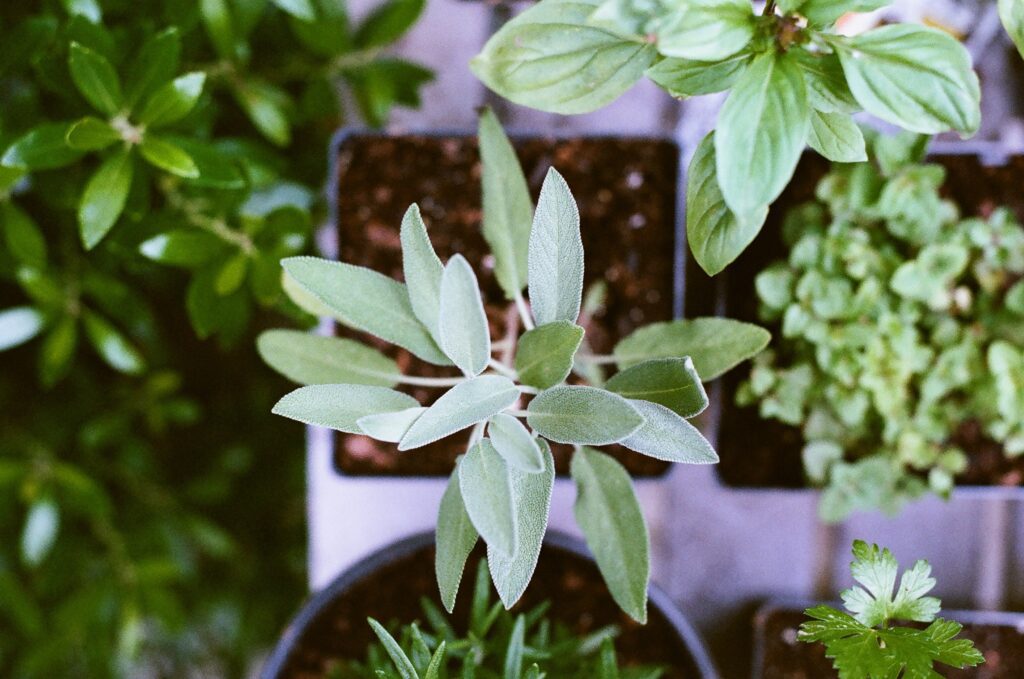
Herbs are both annual and perennial, and some can be perennial in certain parts of the country and annual in others, so it’s important to know what growing zone you’re in and how that affects the lifecycle of your selected herbs. For example, in Maine, rosemary is annual due to our cold winters, but it is perennial in many parts of the US and the world. Oregano, on the other hand is perennial here (and reseeds very easily), so we use it for cooking and as a low-growing landscape plant. We’re convinced we’ll have oregano for life based on what’s already in our garden!
To grow herbs successfully, you don’t need much – plenty of sun and soil that drains well. We’ve used bagged garden soil mixed with perlite and potting soil with good results for most of our herbs. The exceptions are herbs like rosemary and lavender, which are native to the Mediterranean and thrive in a much grittier, sandier soil. A rule of thumb with all herbs is to ensure proper drainage, as they do not like to be wet. Like any living thing, they need some water, but most herbs prefer to be a bit drier.
Once you’ve determined your goals for your herb garden, you’re ready for planting. We’ve outlined five of the easiest and most popular herbs to help you get started.
Best Annual Herbs
- Basil
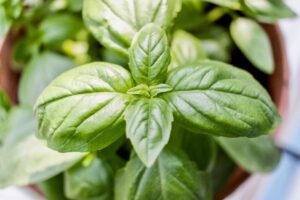
Found in nearly all herb gardens, basil leaves add an Italian flair to any dish. It’s a bit fussier than other herbs when it comes to warmth and needs temperatures of at least 70 degrees but will reward you with big healthy plants. Regular harvesting of the leaves encourages new growth, keeping the plants bushy instead of leggy. This garden favorite is easy to start from cuttings, too.
- Cilantro
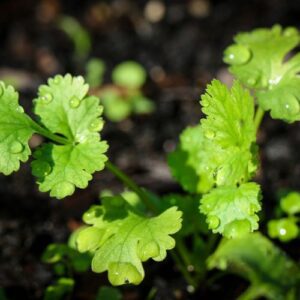
Also known as coriander, cilantro is a pungent herb popular in Mexican cooking. This fabulous herb is easily grown from seed but is known to bolt (flower) when outside temps get hot. The upside of bolting is that once the flowers fade, the plant produces coriander seeds you can harvest for planting again or for storing and grinding to spice other dishes. We have bags of coriander seed – we’ll never have to buy it again!
- Dill
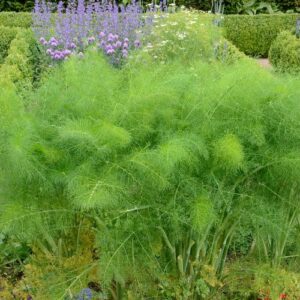
Used for more than just pickles, fresh dill makes a wonderful accompaniment to fish, potato salad, sauces, and more. Dill can grow to be quite tall, so keeping it sheltered from strong winds will prevent it from blowing over and breaking. Be sure to direct sow seeds in the garden versus starting them indoors and trying to transplant later. Dill grows via a taproot, making it difficult to transplant. Its delicate yellow flowers attract butterflies and when left to dry will easily reseed for more dill the next season.
- Parsley
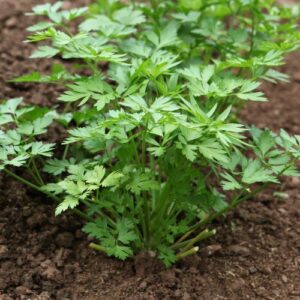
We like to grow flat leaf parsley, as that’s what we use most for cooking. It lends a grassy, slightly peppery note to just about anything: soups, salads, meats, and vegetables. The more common curly parsley is also edible and preferred by some for cooking (we think it makes a pretty garnish). Flat leaf parsley can grow to be 2-3 feet tall, while curly parsley grows to about one foot.
- Rosemary
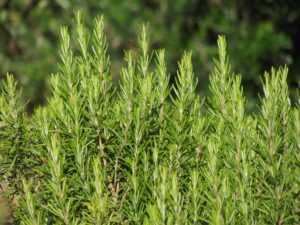
Considered a tender perennial, rosemary is annual in our zone 6a, but is perennial in warmer climates (know your growing zone to determine whether your rosemary will be annual or perennial). When it’s perennial, rosemary can grow to six feet tall if planted in the ground. It will remain smaller when planted in a pot. As an annual here, our plants rarely grow to be more than a 18-24 inches in a season. We use the fragrant leaves with chicken, roasted potatoes, and flat breads. They’re also easily dried for use in wintertime. This herb definitely likes things on the dry side, so it makes a great drought-tolerant choice.
Best Perennial Herbs
- Thyme
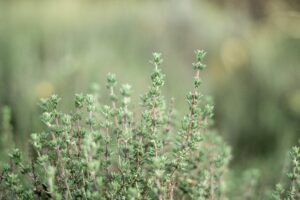
One of the woody herbs, thyme is a mainstay in our garden. We love the fresh sprigs for use with roasted chicken and for flavoring chicken soup (it’s a must for the soup). It produces tiny pink flowers that attract pollinators and add interest to the garden. It makes for a fantastic low-growing shrub that works well as a border plant, and it’s easy to start from cuttings.
- Chive
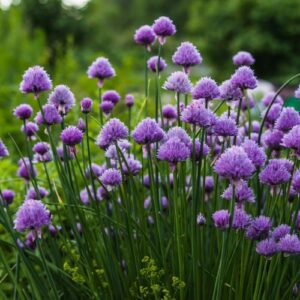
No herb garden is complete without chives! This delightful plant is tough, pretty, and tasty. It’s one of the earliest to emerge in spring, tolerates harsh winters, drought, and poor soil conditions, and is easily divided for sharing or transplanting. In late spring, it produces lavender-colored flowers shaped like little pom poms which are also edible. The delicate onion flavor complements just about anything, though chive butter is a favorite in our house.
- Oregano
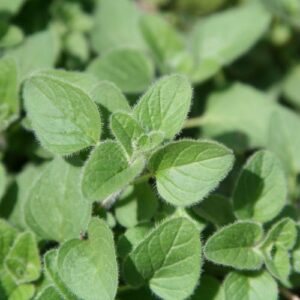
There are many types of oregano, and those types can have multiple varieties and cultivars, so be sure to pick the best one for your garden. For example, we grow two varies of common oregano (scientific name: Origanum vulgare). In addition to the standard Origanum vulgare, which can grow to three feet tall, we also grow Origanum vulgare ‘Compactum’ that only grows to six inches in height.
We also grow Greek oregano which has a slightly stronger flavor than common oregano. Each of our plants flower in late spring, creating a haven for pollinators, and will reseed themselves easily. If you don’t want oregano seedlings popping up all over the place next season, removing the flower heads before they produce seeds is recommended.
- Sage
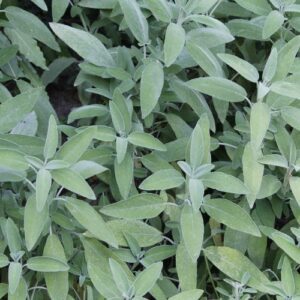
Another of the woody herbs, the silvery green leaves of the common sage plant lend a calming presence to the garden and a delightful accompaniment to pork and chicken, sausage and stuffing. Like many herbs, sage also comes in a wide range of varieties and colors.
We grow the standard common sage you’re most likely to see in the grocery store (also known as culinary sage), as well as a variegated version with cream and green leaves. The flavor is the same, but we like the visual interest we get from having two varieties. This one is easy to propagate from cuttings and also dries nicely. We’ll dry a bunch of leaves and then run them through our spice grinder to make a quick version of rubbed sage to have on hand for use throughout winter.
- Tarragon
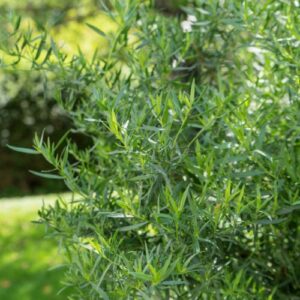
I could have gone with lavender, here, but I opted for tarragon, mainly because of my love for chicken salad (stay with me on this one). Chicken salad wouldn’t be the same without fresh tarragon. That wonderful licorice flavor (and I don’t even like licorice) makes absolutely the best chicken salad, but I digress. Tarragon may not be a standard in most herb gardens, but we love it…for chicken salad if nothing else.
If you decide to plant it, go with the French variety over the Russian. French tarragon has a superior flavor by far. It will last in the garden for 3-4 years, so it’s not especially long lived, but it’s wonderful, doesn’t take up a lot of space, doesn’t drop seeds, and just may encourage you to put it in your chicken salad!
Whatever you decide to put in your herb garden, just be sure it gets at least six hours of sun each day, is protected from harsh winds, and offers soil that drains well. Have fun with it. Experiment and use those herbs in your cooking – you’ll be glad you did!
